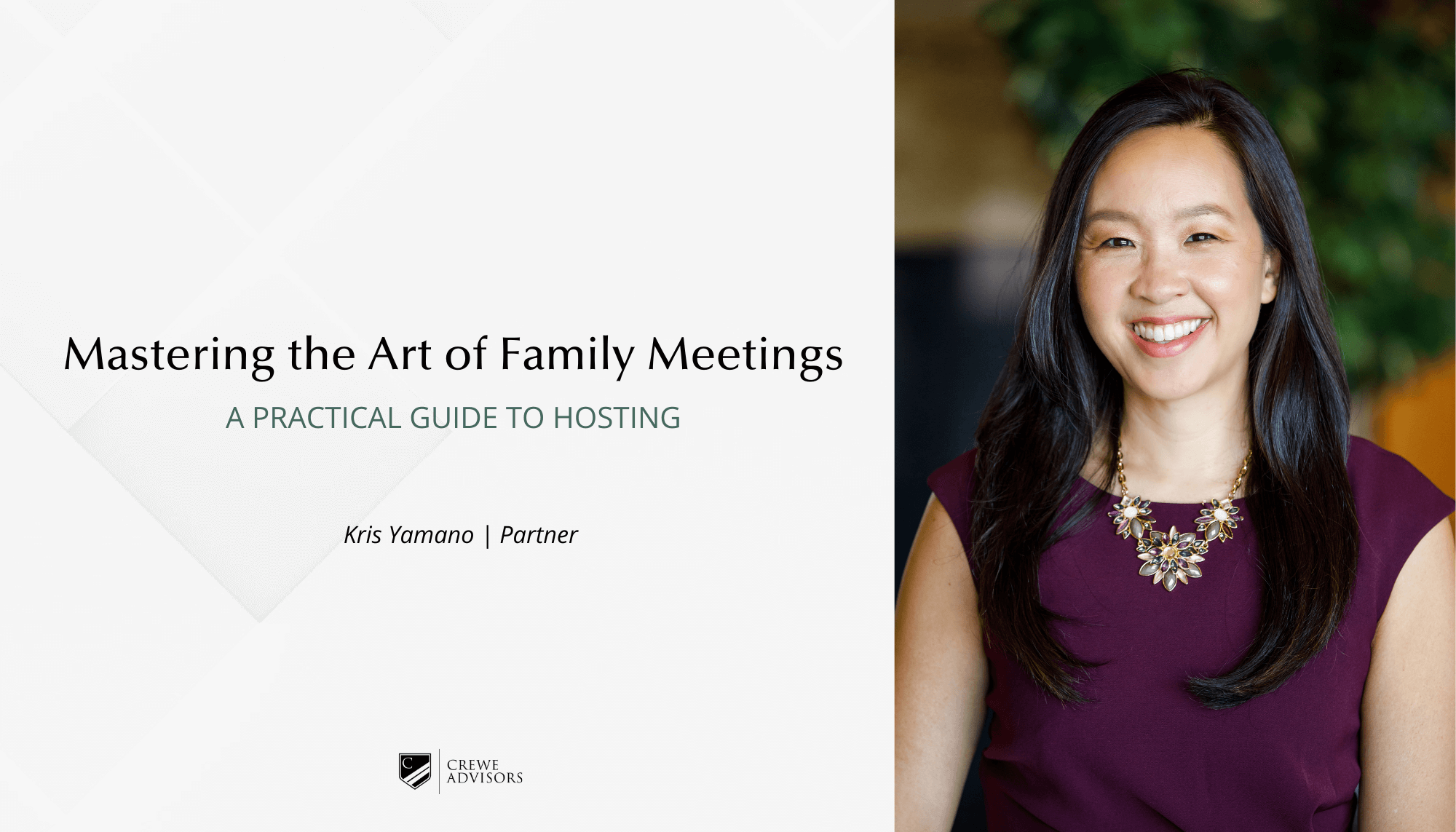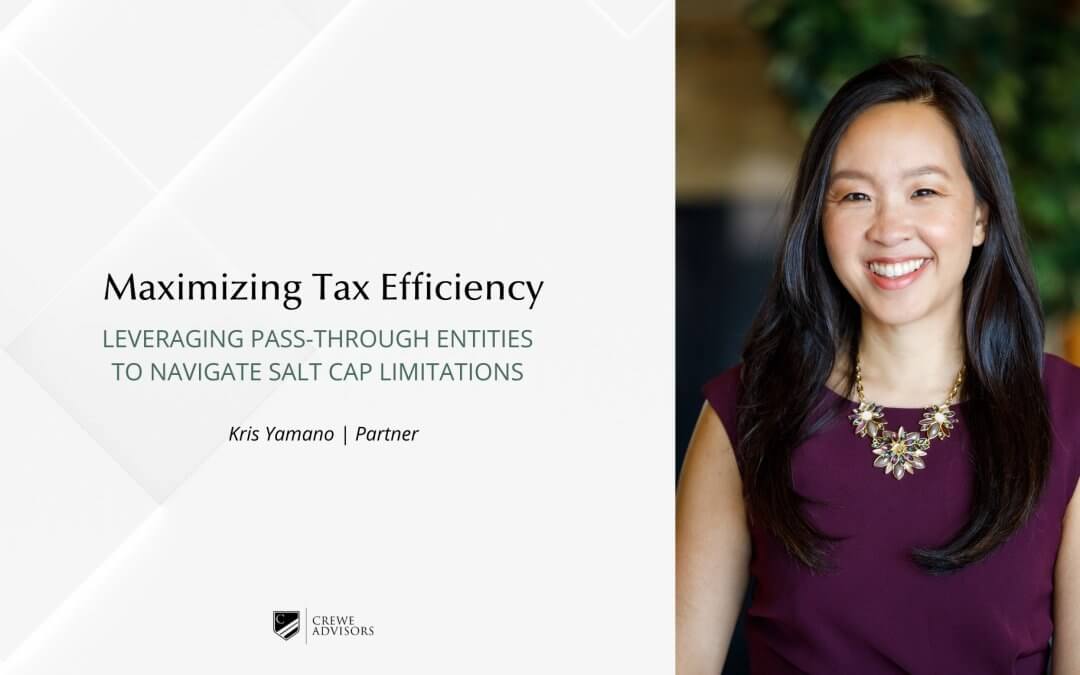Our last post discussed the crucial role effective family meetings play in helping high-net-worth families overcome the challenges of multi-generational wealth. Organizing and executing a successful family meeting is no easy task. Covering everything from creating a family mission statement to discussing the specifics of a family’s succession plan or simply working through family dynamics poses unique challenges. A well-structured and thoughtfully organized family meeting can foster stronger family bonds, promote the family’s shared values, and facilitate strategic decision-making. Here are some of the essential elements and best practices to help ensure your family meeting is effective and worthy of the time investment.
- 1. Define the Purpose and Objectives:
Before diving into the logistics of hosting a family meeting, it’s crucial to clarify the purpose and objectives of the gathering. Consider what you hope to achieve during the session. Clearly articulate the reasons behind the meeting, whether it is to discuss wealth management strategies, share family stories and values, educate the next generation, or plan for the future. Having a clear focus will help you set the agenda and engage all participants in meaningful discussions. - 2. Choose the Right Setting
Selecting the appropriate setting for your family meeting is paramount. Opt for a location that accommodates the number of participants comfortably and encourages open dialogue and relaxation, away from the distractions of everyday life. Whether it’s a retreat center, a family-owned property, or a neutral venue, consider the atmosphere that would be most suitable for your family’s unique dynamics and preferences. - 3. Establish Clear Communication:
Open and transparent communication is vital for the success of any family meeting. Make sure to communicate the purpose, date, time, and location well in advance to give family members sufficient time to prepare and prioritize attendance. Encourage active participation by emphasizing the importance of everyone’s input and perspective. To create a sense of inclusivity, encourage participation from all family members, regardless of their age or level of involvement in wealth management. Everyone should feel comfortable expressing their opinions and concerns. To ensure this, setting ground rules such as the following may be helpful:- Be present – make it a priority to attend and participate. Eliminate all distractions and put away all electronic devices.
- Be respectful – listen when someone else is speaking and use kind words when expressing your opinion. Challenge thoughts and ideas, not people.
- Be open-minded – don’t be attached to specific outcomes and be willing to edit your position when needed.
- Be patient – know that not all issues will get addressed immediately. Be willing to focus on the most important things first and allow everyone in the room to have their own feelings about the issues – even if they are not in alignment with your own.
- 4. Create an Agenda:
Develop a detailed agenda that outlines the topics, discussions, and activities for the meeting. Share this agenda with all attendees beforehand to provide them with an overview of what to expect. A well-structured agenda will keep the meeting focused, allow for efficient time management, and ensure that all important matters are addressed. Consider incorporating interactive activities or breakout sessions to engage attendees and foster collaboration. - 5. Select a Neutral Facilitator:
Consider appointing a neutral facilitator to lead the meeting. This individual should possess strong communication and mediation skills, be knowledgeable about family dynamics and wealth management, and maintain a neutral stance. A facilitator can help maintain a respectful and balanced environment, manage conflicts, and guide discussions towards constructive outcomes. - 6. Focus on Education and Shared Values:
Incorporate educational components into the meeting to enhance financial literacy and ensure a shared understanding of family values and goals. Present relevant information on wealth management, investment strategies, estate planning, and philanthropy. Encourage family members to share personal stories and experiences to strengthen family bonds and reinforce shared values. - 7. Plan for Succession and Continuity:
Addressing the issue of succession is crucial for the long-term success of high net worth families. Dedicate time during the meeting to discuss succession plans, roles, and responsibilities for future generations. Establish clear guidelines for decision-making, leadership transitions, and governance structures to ensure continuity and prevent conflicts. - 8. Document Meeting Outcomes and Next Steps:
Assign someone to take comprehensive minutes or notes during the meeting. These records will serve as a reference point for future discussions, decisions, and follow-up actions. Share the meeting outcomes and action items with all family members, emphasizing accountability and tracking progress over time. - 9. Follow-Up and Evaluate:
After the family meeting, schedule regular follow-up sessions to review progress, address outstanding matters, and reinforce the commitments made during the gathering. Evaluate the effectiveness of the meeting by soliciting feedback from participants and use their input to continuously improve future gatherings.
Hosting a successful high-net-worth family meeting requires careful planning, clear communication, and a focus on open dialogue and shared values. By implementing these strategies and tips, you can create a productive environment where family members can collaboratively address financial matters, strengthen relationships, and lay the groundwork for a thriving multi-generational wealth strategy. A good wealth advisor can provide valuable assistance in facilitating these meetings and help the family create an inclusive, respectful, and purpose-driven environment that encourages collaboration, shared decision-making, and a sense of belonging for all family members.










